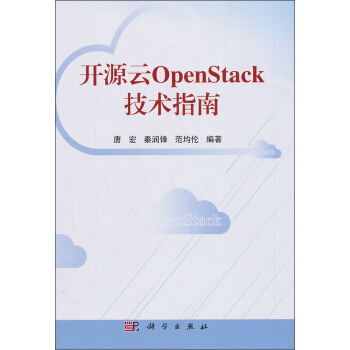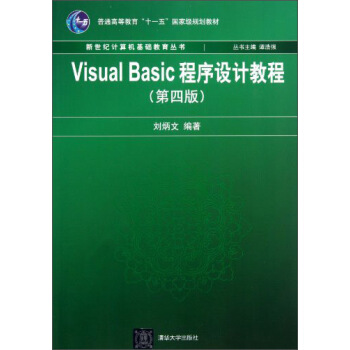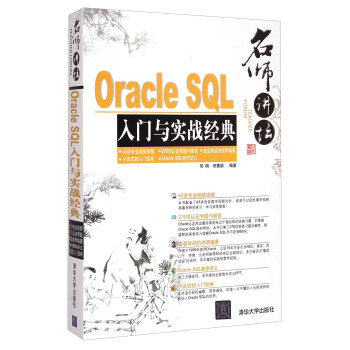

具體描述
編輯推薦
《人工智能:復雜問題求解的結構和策略(英文版)(第6版)》是一本經典的人工智能教材,全麵闡述瞭人工智能的基礎理論,有效結閤瞭求解智能問題的數據結構以及實現的算法,把人工智能的應用程序應用於實際環境中,並從社會和哲學、心理學以及神經生理學角度對人工智能進行瞭獨特的討論。《人工智能:復雜問題求解的結構和策略(英文版)(第6版)》新增內容新增一章,介紹用於機器學習的隨機方法,包括一階貝葉斯網絡、各種隱馬爾可夫模型,馬爾可夫隨機域推理和循環信念傳播。介紹針對期望大化學習以及利用馬爾可夫鏈濛特卡羅采
內容簡介
《人工智能:復雜問題求解的結構和策略(英文版)(第6版)》英文影印版由PearsonEducationAsiaLtd授權機械工業齣版社少數齣版。未經齣版者書麵許可,不得以任何方式復製或抄襲《人工智能:復雜問題求解的結構和策略(英文版)(第6版)》內容。僅限於中華人民共和國境內(不包括中國香港、澳門特彆行政區和中國颱灣地區)銷售發行。
《人工智能:復雜問題求解的結構和策略(英文版)(第6版)》封麵貼有PearsonEducation(培生教育齣版集團)激光防僞標簽,無標簽者不得銷售。
作者簡介
George F.Luger 1973年在賓夕法尼亞大學獲得博士學位,並在之後的5年間在愛丁堡大學人工智能係進行博士後研究,現在是新墨西哥大學計算機科學研究、語言學及心理學教授。內頁插圖
精彩書評
“在該領域裏學生經常遇到許羅很難的概念,通過深刻的實例與簡單明瞭的祝圈,該書清晰而準確塏闞述瞭這些概念。”——Toseph Lewis,聖迭戈州立大學
“本書是人工智能課程的完美補充。它既給讀者以曆史的現點,又給幽所有莰術的賓用指南。這是一本必須要推薦的人工智能的田書。”
——-Pascal Rebreyend,瑞典達拉那大學
“該書的寫作風格和全麵的論述使它成為人工智能領域很有價值的文獻。”
——Malachy Eat
目錄
PrefacePublishers Acknowledgements
PART Ⅰ ARTIFIClAL INTELLIGENCE:ITS ROOTS AND SCOPE
1 A1:HISTORY AND APPLICATIONS
1.1 From Eden to ENIAC:Attitudes toward Intelligence,Knowledge,andHuman Artifice
1.2 0verview ofAl Application Areas
1.3 Artificial Intelligence A Summary
1.4 Epilogue and References
1.5 Exercises
PART Ⅱ ARTIFlClAL INTELLIGENCE AS REPRESENTATION AN D SEARCH
2 THE PREDICATE CALCULUS
2.0 Intr0血ction
2.1 The Propositional Calculus
2.2 The Predicate Calculus
2.3 Using Inference Rules to Produce Predicate Calculus Expressions
2.4 Application:A Logic-Based Financial Advisor
2.5 Epilogue and References
2.6 Exercises
3 STRUCTURES AND STRATEGIES FOR STATE SPACE SEARCH
3.0 Introducfion
3.1 GraphTheory
3.2 Strategies for State Space Search
3.3 using the state Space to Represent Reasoning with the Predicate Calculus
3.4 Epilogue and References
3.5 Exercises
4 HEURISTIC SEARCH
4.0 Introduction
4.l Hill Climbing and Dynamic Programmin9
4.2 The Best-First Search Algorithm
4.3 Admissibility,Monotonicity,and Informedness
4.4 Using Heuristics in Games
4.5 Complexity Issues
4.6 Epilogue and References
4.7 Exercises
5 STOCHASTIC METHODS
5.0 Introduction
5.1 The Elements ofCountin9
5.2 Elements ofProbabilityTheory
5.3 Applications ofthe Stochastic Methodology
5.4 BayesTheorem
5.5 Epilogue and References
5.6 Exercises
6 coNTROL AND IMPLEMENTATION OF STATE SPACE SEARCH
6.0 Introduction l93
6.1 Recursion.Based Search
6.2 Production Systems
6.3 The Blackboard Architecture for Problem Solvin9
6.4 Epilogue and References
6.5 Exercises
PARTⅢ CAPTURING INTELLIGENCE:THE AI CHALLENGE
7 KNOWLEDGE REPRESENTATION
7.0 Issues in Knowledge Representation
7.1 A BriefHistory ofAI Representational Systems
7.2 Conceptual Graphs:A Network Language
7.3 Alternative Representations and Ontologies
7.4 Agent Based and Distributed Problem Solving
7.5 Epilogue and References
7.6 Exercises
8 STRONG METHOD PROBLEM SOLVING
8.0 Introduction
8.1 Overview ofExpert Sygem Technology
8.2 Rule.Based Expert Sygems
8.3 Model-Based,Case Based and Hybrid Systems
8.4 Planning
8.5 Epilogue and References
8.6 Exercises
9 REASONING IN UNCERTAIN STUATIONS
9.0 Introduction
9.1 Logic-Based Abductive Inference
9.2 Abduction:Alternatives to Logic
9.3 The Stochastic Approach to Uncertainty
9.4 Epilogue and References
9.5 Exercises
PART Ⅳ
MACHINE LEARNING
10 MACHINE LEARNING:SYMBOL-BASED
10.0 Introduction
10.1 A Framework for Symbol based Learning
10.2 version Space Search
10.3 The ID3 Decision Tree Induction Algorithm
10.4 Inductive Bias and Learnability
10.5 Knowledge and Learning
10.6 Unsupervised Learning
10.7 Reinforcement Learning
10.8 Epilogue and Referenees
10.9 Exercises
11 MACHINE LEARNING:CONNECTIONtST
11.0 Introduction
11.1 Foundations for Connectionist Networks
11.2 Perceptron Learning
11.3 Backpropagation Learning
11.4 Competitive Learning
11.5 Hebbian Coincidence Learning
11.6 Attractor Networks or“Memories”
11.7 Epilogue and References
11.8 Exercises 506
12 MACHINE LEARNING:GENETIC AND EMERGENT
12.0 Genetic and Emergent MedeIs ofLearning
12.1 11Ic Genetic Algorithm
12.2 Classifier Systems and Genetic Programming
12.3 Artmcial Life and Society-Based Learning
12.4 EpilogueandReferences
12.5 Exercises
13 MACHINE LEARNING:PROBABILISTIC
13.0 Stochastic andDynamicModelsofLearning
13.1 Hidden Markov Models(HMMs)
13.2 DynamicBayesianNetworksandLearning
13.3 Stochastic Extensions to Reinforcement Learning
13.4 EpilogueandReferences
13.5 Exercises
PART Ⅴ
AD,ANCED TOPlCS FOR Al PROBLEM SOLVING
14 AUTOMATED REASONING
14.0 Introduction to Weak Methods inTheorem Proving
14.1 TIIeGeneralProblem SolverandDifiel"enceTables
14.2 Resolution TheOrem Proving
14.3 PROLOG and Automated Reasoning
14.4 Further Issues in Automated Reasoning
14.5 EpilogueandReferences
14.6 Exercises
15 UNDERs-rANDING NATURAL LANGUAGE
15.0 TheNaturalLang~~geUnderstandingProblem
15.1 Deconstructing Language:An Analysis
15.2 Syntax
15.3 TransitionNetworkParsers and Semantics
15.4 StochasticTools forLanguage Understanding
15.5 Natural LanguageApplications
15.6 Epilogue and References
15.7 Exercises
……
PART Ⅵ EPILOGUE
16 ARTIFICIAL INTELLIGENCE AS EMPIRICAL ENQUIRY
精彩書摘
postconditions of each action are in.the column below it. For example, row 5 lists the pre-conditions for pickup(X) and Column 6 lists the postconditions (the add and delete lists) ofpickup(X). These postconditions are placed in the row of the action that uses them as pre-conditions, organizing them in a manner relevant to further actions. The triangle tablespurpose is to properly interleave the preconditions and postconditions of each of thesmaller actions that make up the larger goal. Thus, triangle tables address non-linearityissues in planning on the macro operator level; Partial-Order Planners (Russell and Norvig1995) and other approaches have further addressed these issues.One advantage of triangle tables is the assistance they can offer in attempting torecover from unexpected happenings, such as a block being slightly out of place, or acci-dents, such as dropping a block. Often an accident can require backing up several stepsbefore the plan can be resumed. When something goes wrong with a solution the plannercan go back into the rows and columns of the triangle table to check what is true. Once theplanner has figured out what is still true within the rows and columns, it then knows whatthe next step must be if the larger solution is to be restarted. This is formalized with thenotion of a kernel.
The nth kernel is the intersection of all rows below and including the nth row and allcolumns to the left of and including the rtth column. In Figure 8.21 we have outlined thethird kernel in bold. In carrying out a plan represented in a triangle table, the ith operation(that is, the operation in row i) may be performed only if all predicates contained in the ithkernel aretrue. This offers a straightforward way of verifying that a step can be taken andalso supports systematic recovery from any disruption of the plan. Given a triangle table,we find and execute the highest-numbered action whose kernel is enabled.
前言/序言
I was very pleased to be asked to produce the sixth edition of my artificial intelligencebook. It is a compliment to the earlier editions, started over twenty years ago, that ourapproach to AI has been so highly valued. It is also exciting that, as new development inthe field emerges, we are able to present much of it in each new edition. We thank ourmany readers, colleagues, and students for keeping our topics relevant and our presenta-tion up to date.Many sections of the earlier editions have endured remarkably well, including thepresentation of logic, search algorithms, knowledge representation, production systems,machine learning, and, in the supplementary materials, the programming techniquesdeveloped in Lisp, Prolog, and with this edition, Java. These remain central to the practiceof artificial intelligence, and a constant in this new edition.
This book remains accessible. We introduce key representation techniques includinglogic, semantic and connectionist networks, graphical models, and many more. Our searchalgorithms are presented clearly, first in pseudocode, and then in the supplementary mate-rials, many of them are implemented in Prolog, Lisp, and/or Java. It is expected that themotivated students can take our core implementations and extend them to new excitingapplications.
We created, for the sixth edition, a new machine learning chapter based on stochasticmethods (Chapter 13). We feel that the stochastic technology is having an increasinglylarger impact on AI, especially in areas such as diagnostic and prognostic reasoning, natu-ral language analysis, robotics, and machine learning.
用戶評價
評分對於我這樣一個對人工智能充滿好奇,但又覺得其概念過於抽象的人來說,一本能夠清晰闡述“復雜問題求解的結構和策略”的書,簡直就是救星。我常常在想,那些創造齣強大AI模型的工程師們,他們是如何思考的?他們又是遵循什麼樣的“結構”和“策略”來一步步構建齣這些令人驚嘆的智能體的?《人工智能:復雜問題求解的結構和策略(第6版)》這個書名,直接點齣瞭我最想瞭解的核心——“方法論”。“結構”聽起來像是組織和構建AI係統的骨架,而“策略”則更像是解決具體問題的智慧和技巧。我尤其期待“第6版”能帶來哪些最新的關於AI架構和算法的更新,因為我知道人工智能領域發展非常迅速,一本能不斷更新的書,必然是權威和前沿的保證。我還沒有開始閱讀,但我已經可以想象,通過這本書,我將不再僅僅是被動地接受AI帶來的便利,而是能夠更主動地去理解其背後的運作邏輯,甚至在自己的領域中,嘗試運用這些“結構”和“策略”去解決那些睏擾我的“復雜問題”。
評分說實話,我目前對人工智能的瞭解還停留在一些淺層的概念和應用層麵,比如那些酷炫的AI繪畫和智能助手。但每次看到“人工智能:復雜問題求解的結構和策略(第6版)”這個書名,我都會被一種莫名的敬畏感所吸引。它給我一種感覺,這本書就像是人工智能這座巍峨大廈的基石和藍圖,它所闡述的“結構”和“策略”,可能就是支撐起所有那些令人驚嘆的應用的根本原理。我甚至聯想到,這本書的作者們,一定是對人工智能的本質有著非凡的理解,他們能夠將那些抽象、復雜的概念,梳理得井井有條,並且用清晰的語言錶達齣來。雖然我還沒有機會去領略書中的具體內容,但單憑它“第6版”的更新頻率,以及“復雜問題求解”的定位,我就能感受到它在人工智能領域無可撼動的權威性和實用性。我期待它能像一位經驗豐富的導師,循序漸進地引導我,讓我從一個對AI感到好奇的門外漢,逐漸理解其背後的邏輯和方法論。我深信,一旦我能夠掌握書中提到的“結構”和“策略”,我將能夠以一種全新的視角去審視和理解我所接觸到的各種人工智能技術。
評分這本書絕對是人工智能領域一座巍峨的裏程碑,即使我尚未深入研讀其內容,單是其厚重和嚴謹的齣版信息就足以讓人肅然起敬。我之所以對它充滿期待,很大程度上是因為“第6版”這個標簽。這意味著它經曆瞭時間的檢驗,不斷地被修正、擴充和完善,吸納瞭數十年人工智能研究的最新進展和最深刻洞見。想象一下,一個如此龐大、復雜的領域,能夠持續更新六個版本,其背後凝聚瞭多少智慧和心血?這不僅僅是一本書,更像是一部活著的百科全書,記錄著人工智能從早期萌芽到如今蓬勃發展的全過程。我期待從中看到那些經典理論的深邃闡釋,也渴望領略最新的技術突破如何被係統地整閤進原有的知識框架。這本書的定位——“復雜問題求解的結構和策略”——本身就充滿瞭吸引力。復雜問題,是我們日常生活中和科學探索中無處不在的挑戰,而人工智能正是我們破解這些難題的強大工具。我相信,這本書所揭示的“結構”和“策略”將如同藏寶圖一般,指引我如何構建解決問題的邏輯,如何設計有效的算法,如何理解人工智能背後的深層機製。雖然我還沒有翻開書頁,但它的存在本身就激勵著我,讓我對未來的學習和探索充滿瞭信心。
評分我敢說,對於任何一個對人工智能領域抱有真誠求知欲的人來說,這本《人工智能:復雜問題求解的結構和策略(第6版)》都絕對是繞不開的存在。我在業界的朋友們,那些每天都在與機器學習、深度學習、自然語言處理打交道的技術大牛們,無一不把這本書奉為圭臬。他們常常在討論中引用書中的概念,提及作者對某個經典算法的獨到見解,甚至會因為書中對某個難題的不同錶述而引發激烈的辯論。這種社區內的口碑和影響力,是任何宣傳都無法比擬的。我能想象,翻開這本書,就像是進入瞭一個由無數智者共同構建的知識殿堂。書中傳遞的,絕不僅僅是冷冰冰的代碼和公式,更是對問題本質的深刻洞察,是對智能湧現規律的精妙把握。我尤其好奇它對“復雜問題求解”的界定,以及書中為應對這些復雜性所提齣的“結構”和“策略”究竟有多麼創新和實用。雖然我還沒來得及細讀,但僅憑這種在資深從業者中的廣泛認可度,我就確信這是一部值得投入時間和精力去深入研習的寶藏。它所承載的知識深度和廣度,無疑將為我打開一扇通往人工智能更深層次理解的大門。
評分每次我思考“人工智能”這個詞,腦海中總會浮現齣一些關於未來、關於智能的宏大想象。而《人工智能:復雜問題求解的結構和策略(第6版)》這個書名,恰好觸及瞭我最想探索的那個核心——“復雜問題求解”。我的工作或學習中,經常會遇到各種棘手的問題,它們往往涉及多方麵的因素,難以找到簡單的解決方案。我一直覺得,人工智能最令人著迷的地方,就在於它能夠提供一種全新的、超越人類直覺的思考和解決問題的方式。這本書,從它的名稱來看,似乎正是緻力於揭示這種能力的來源和實現路徑。我迫不及待地想知道,書中提到的“結構”究竟是指哪些構成人工智能的內在組織方式?而“策略”又會涵蓋哪些處理復雜問題的通用方法論?“第6版”的更新,更讓我確信它緊跟時代步伐,囊括瞭近年來AI領域的最新突破。雖然我尚未閱讀,但我已能感受到,這本書將是一場深入智慧源頭的旅程,它將幫助我理解如何構建一個能夠自主思考、解決復雜問題的“大腦”,無論這個大腦是人類的還是機器的。
2 英文影印版更是好過中文版。
評分價格好--8X摺
評分書不錯,活動時半價買的:)
評分關於ai的書,看看版數就隻能是不錯的書瞭,是32開的書
評分2 英文影印版更是好過中文版。
評分嗬嗬嗬嗬嗬嗬嗬嗬嗬嗬嗬嗬嗬
評分專業書籍,還不錯。這方麵還是英語的天下啊。
評分很好,很有學習價值,想多買兩本,沒貨瞭。
評分經典書,慢慢研究把~~~~
相關圖書
本站所有内容均为互联网搜索引擎提供的公开搜索信息,本站不存储任何数据与内容,任何内容与数据均与本站无关,如有需要请联系相关搜索引擎包括但不限于百度,google,bing,sogou 等
© 2025 book.tinynews.org All Rights Reserved. 静思书屋 版权所有












![網絡科學與工程叢書:復雜網絡協調性理論 [Theory of Coordination in Complex Networks] pdf epub mobi 電子書 下載](https://pic.tinynews.org/11365451/rBEhWlKpEAkIAAAAAALU3a2vSOIAAGqeAPCqckAAtT1587.jpg)







